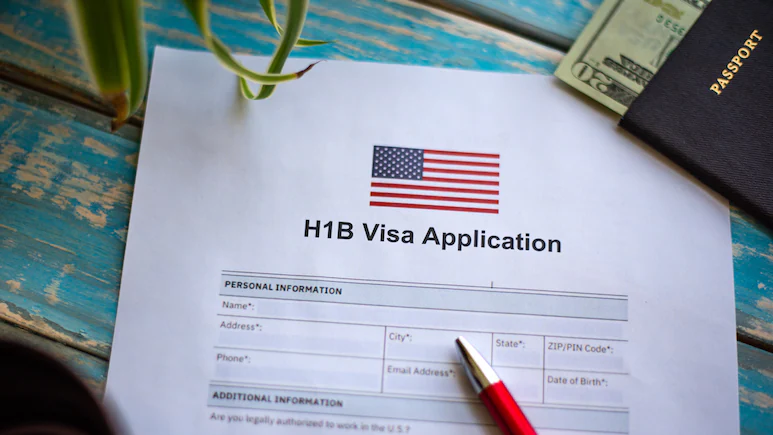O1 Visa Types: What Types of O1 Visas Exist and Which One Is Right for You

Reviewed by: Nicole Gunara, Managing Attorney at Manifest Law
Most U.S. work visas come with a major drawback—your immigration status is tied to your job. Lose your job, and you’re at risk of losing your visa. The O1 visa, however, offers a unique opportunity: with the right structure, you can take control of your career and avoid being dependent on a single employer.
Whether you’re a founder, freelancer, or high-skilled professional, structuring your O1 visa strategically can give you the flexibility to work with multiple clients, build your own business, or secure long-term visa stability.
In this blog article, we’ll break down three different ways to structure your O1 visa—so you can choose the best option for your career and immigration goals.
What is the O1 Visa?

The O1 visa is a U.S. work visa designed for individuals who have demonstrated extraordinary ability in fields like science, technology, business, education, arts, or athletics. Unlike the H-1B, which has a strict lottery system and an annual cap, the O1 visa has no such limits—meaning if you qualify, you can apply at any time.
To get an O1 visa, you must meet the O1 visa requirements set by USCIS and provide strong evidence of your achievements. This can include awards, media coverage, critical roles at top companies, original contributions to your industry, or high salaries. Because the O1 visa is based on merit rather than employer sponsorship alone, it can offer more flexibility—especially if structured strategically.
Learn more about the O1 visa in our comprehensive guide here.
The Risks of Traditional Work Visas
Most U.S. work visas come with a major downside—you’re tied to one employer. If you get laid off or fired, you only have 60 days to find a new job or leave the country. That’s not much time, and for many, it creates unnecessary stress and uncertainty.
For startup founders and professionals on the O1 visa, structuring the visa incorrectly can lead to similar vulnerabilities. Many assume they have more control over their immigration status, only to realize too late that their visa is just as dependent on a single employer. Understanding the different ways to structure an O1 visa can help minimize risk and provide greater flexibility.
4 Ways to Structure Your O1 Visa
1. The “Traditional” O1 Visa (Employer-Sponsored)

Best for: Employees working for a stable company or founders confident in their startup’s future.
The most common way to obtain an O1 visa is through direct sponsorship by an employer. This is often the simplest and fastest way to secure an O1 visa, making it a popular choice for professionals who are joining established companies or founders who are certain about the stability of their business.
How it works:
- A U.S. employer (such as a company, reasonably established startup, or research institution) files the O1 petition on behalf of the applicant.
- The applicant is authorized to work only for the sponsoring employer.
- If the individual wants to change jobs, the new employer must file a new O1 petition.
- If employment is terminated or the visa holder opts to quit the role, the visa holder has just 60 days to find another sponsor, change to another visa, or leave the U.S.
Potential risks:
While this option provides a relatively straightforward path to an O1 visa, it comes with significant limitations:
- Job Loss = Visa Loss: If the company lays you off, you will need to secure a new O1 visa sponsor or leave the country within 60 days.
- Lack of Flexibility: You can’t legally take on side projects, consulting work, or additional employment outside of the sponsoring employer.
- Risk for Founders: Many startup founders obtain an O1 visa through their own company, but if the business struggles or investor funding dries up, your visa status could be in jeopardy.
2. The “Agent” O-1 Visa (For Maximum Flexibility)

Best for: Freelancers, consultants, startup founders, and professionals who work with multiple companies.
If you don’t want to be tied to a single employer, an O1 visa filed by an “agent” gives you the freedom to work on your terms. Instead of relying on one company to sponsor your visa, this setup lets you take on multiple jobs, work with different clients, or even run your own business.
How it works:
- Instead of an employer, a U.S.-based agent (either an individual or a company) files your O- petition.
- Your application must include an “itinerary” of work you will be engaged in doing over the next three years.
- Generally this is a list of companies or clients you’ll be working with.You can work full-time, part-time, or on a contract basis across multiple organizations.
- If you lose a client or job, your visa remains valid as long as you continue working in your field.
Potential risks:
While the agent-based O-1 visa offers the most freedom, it also comes with a few challenges:
- More Paperwork & Complexity: You’ll need to submit contracts, letters, or other proof that you have legitimate work lined up.
- Higher Scrutiny from USCIS: Because this O1 visa structure is less common, immigration officials take a closer look at applications. Strong documentation is key.
- Better for Renewals: Many people start with a traditional employer-sponsored O1 visa and later transition to an agent-based O1 for more flexibility.
3. The “Self-Sponsored” O-1 Visa (For Entrepreneurs & Consultants)

Best for: Startup founders, independent consultants, or those wanting long-term visa security.
If you want complete control over your immigration status and career, a self-sponsored O1 visa is a powerful option. Instead of relying on an outside employer or agent, you create your own U.S. company (LLC, C-Corp, etc.), which then acts as your visa sponsor. This setup lets you work on multiple projects, grow your business, and pivot when needed.
How it works:
- You form a U.S. company (LLC, C-Corp, or another legal entity).
- Your company petitions for your O1 visa, acting as your legal employer.
- You can legally work on multiple projects under your business, whether that means running a startup, consulting for different clients, or building multiple income streams.
- If one client or project ends, your visa remains valid as long as your business continues operating.
Potential risks:
- You Must Prove Your Business is Legitimate: USCIS will look closely at whether your company is real and capable of paying your salary. Strong documentation is essential. Companies with little establishment and no physical space will likely be met with strong resistance.
- Upfront Planning is Required: Setting up your company correctly from the start is crucial. Mistakes in structuring or paperwork could hurt your chances of approval. Further, actions that can be construed as violating an existing status (e.g. F-1, H-1B) should be avoided.
- Legal Guidance is Recommended: Working with an experienced O1 visa lawyer can help you navigate the process and avoid common pitfalls.
How to Choose the Best O1 Visa Strategy for You

Deciding how to structure your O1 visa is one of the most important career moves you’ll make. Your choice impacts your ability to change jobs, start a business, work with multiple clients, or stay in the U.S. long-term if unexpected challenges arise.
The table below breaks down the best O1 visa structure based on key factors like career goals, risk tolerance, and flexibility:
| Traditional O-1 (Employer-Sponsored) | Agent O-1 | Self-Sponsored O-1 | |
Flexibility | Low – tied to one employer | High – can work for multiple clients/employers listed on the petition | Very high – can work on multiple projects under own company |
| Risk if employer/job is lost | High – must leave the U.S. or transfer to another visa within 60 days | Low – as long as some work continues, the visa remains valid | Low – business can continue operating even if a project ends |
| Paperwork complexity | Moderate – employer handles most of the process | High – requires contracts and more supporting documentation | High – must establish a legitimate U.S. business and meet employer requirements |
Long-term career planning | Limited – restricted to one employer | Good – allows for multiple income streams and varied career growth | Excellent – provides max independence |
| O1 visa to green card | Possible – employer must sponsor | Requires strategic planning | Strongest option |
Given the complexity of the O1 visa process, working with an experienced immigration attorney is crucial. At Manifest Law, we help professionals, entrepreneurs, and creatives navigate the visa process and structure their O1 visa in a way that supports their long-term career and immigration goals.
Book a free consultation today to explore your options and secure the best path forward.


















